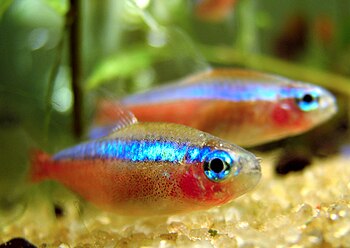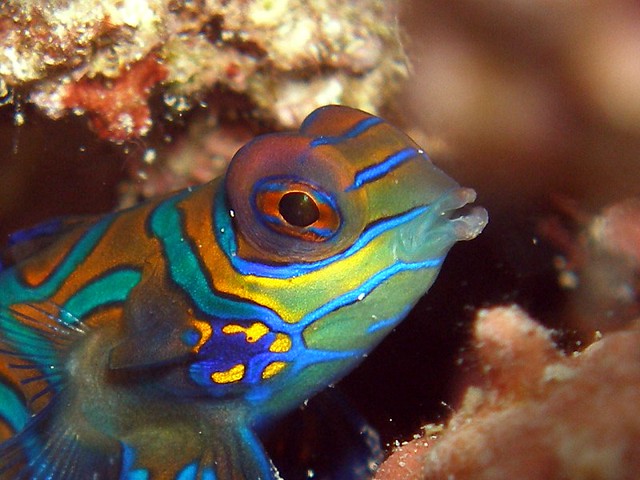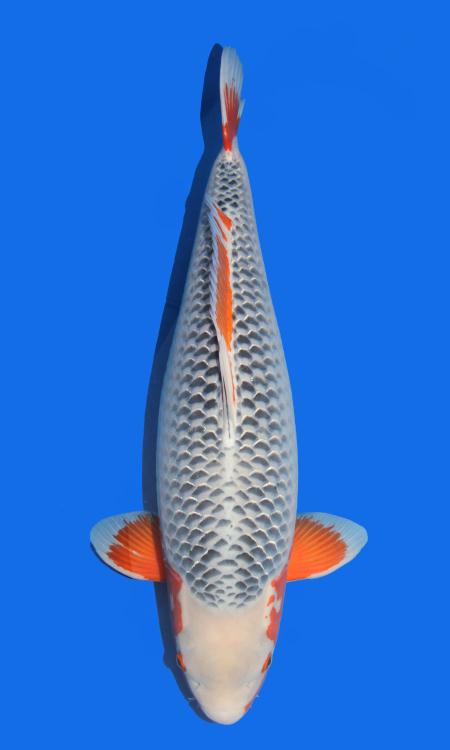 |
| Cardinal tetras Paracheirodon axelrodi waking up in an aquarium. Just after the lights were turned on. Its skin yet in a pink tone. (Photo credit: Wikipedia) |
Since the Cardinal tetra is quite difficult to breed in aquariums, a majority of the Cardinal tetras in the aquarium trade has been wild caught. The native habitat of the Cardinal tetra is the upper Orinoco and Negro rivers in South America, where the water is acidic and very soft. Fortunately enough, the Cardinal tetra is very prolific in the wild and is not considered an endangered species. It is only reluctant to breed when kept in aquariums. In the wild, it is uncommon for a Cardinal tetra to grow older than one year. When you keep Cardinal tetras in aquariums without any predators around, you can, however, make them survive for several years.
The Cardinal tetra can be kept in community aquariums with other peaceful species that appreciate the same water conditions. It will usually stay smaller than 2 inches in length and a group of Cardinal tetras does not need a large aquarium to do well. This species is rarely found in beginner aquariums since it is quite scarce in the aquarium trade, but it is not overly sensitive and a dedicated beginner aquarium keeper that is prepared to monitor the water chemistry and perform frequent water changes can usually make his or her Cardinal tetras thrive. It is especially important to keep down the level of nitrate. The Cardinal tetra is a schooling fish and keeping at least ten specimens is recommended, since this will make the fish less shy and stressed. Cardinal tetras are also much more beautiful to watch when they form a big school, and living in a school makes them display a much broader variety of natural behaviors.
When you set up an aquarium for your Cardinal tetras you should ideally try to make it similar to the native habitat of the fish. A well-planted aquarium that contains floating species is recommended, but you should also leave an area open for swimming. The water should be acidic and very soft. Keep the pH in the 4.6-6.2 range and the d G H under 4. Cardinal tetras can adapt to harder water and even alkaline conditions, but they will be much more sensitive and prone to illness. The recommended temperature range is 73-81° F (23-27 ° C) or even warmer.
|






